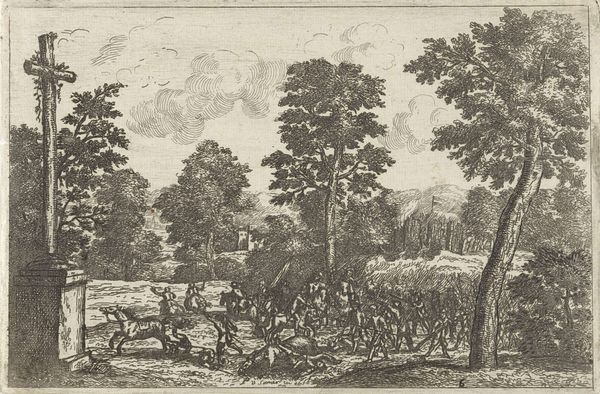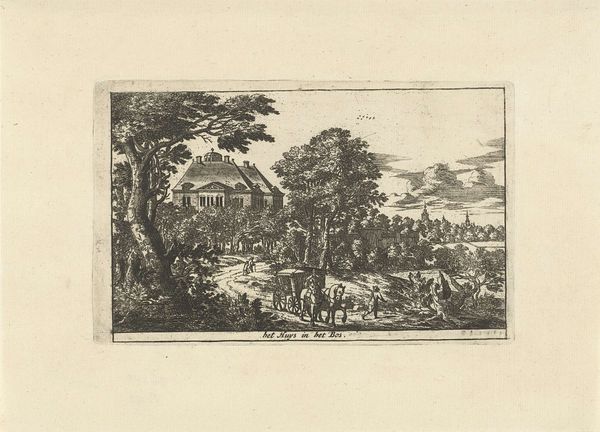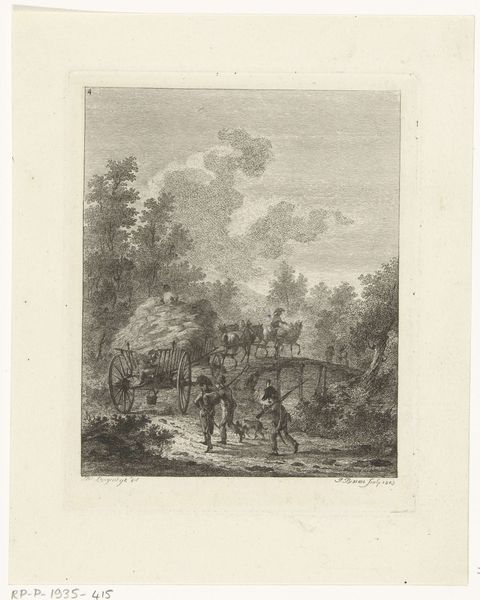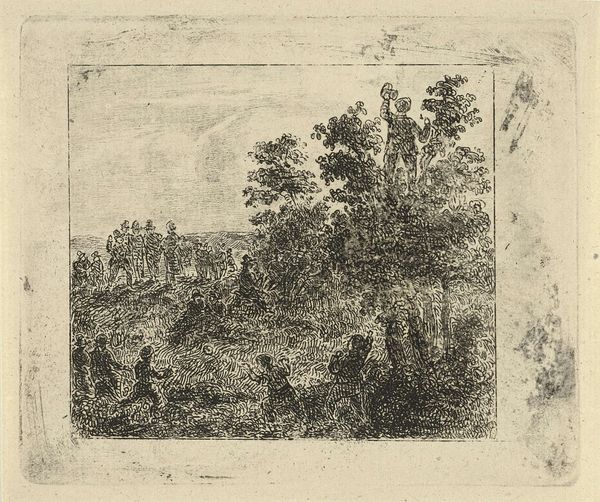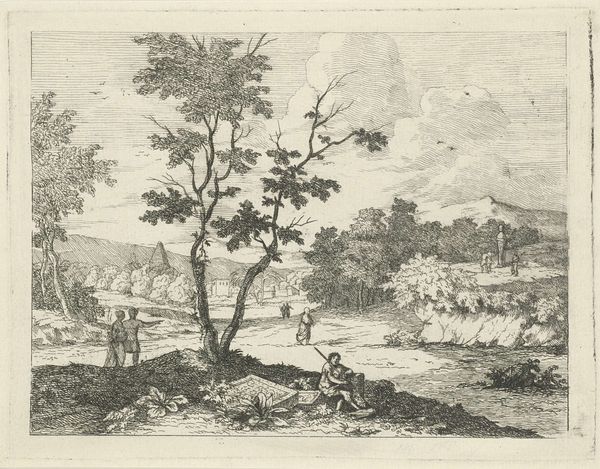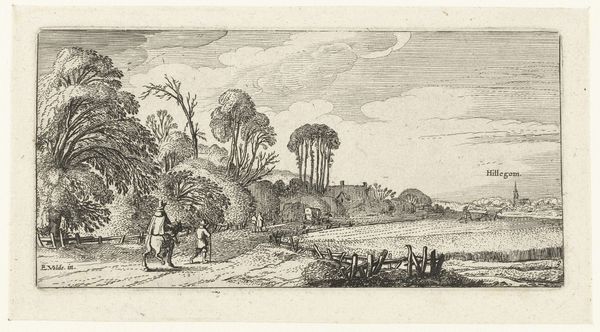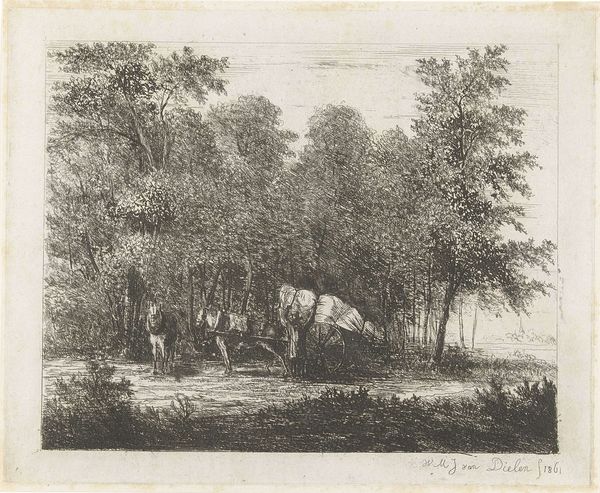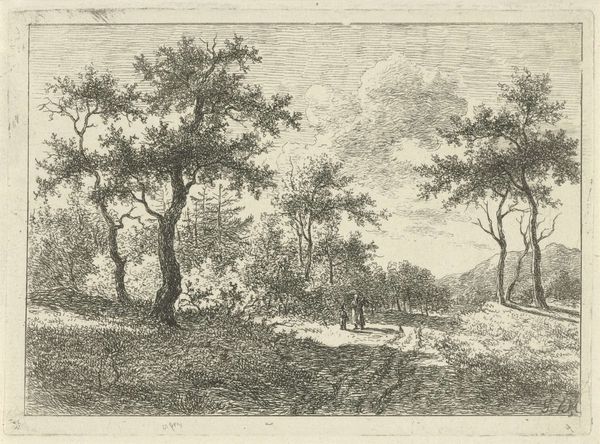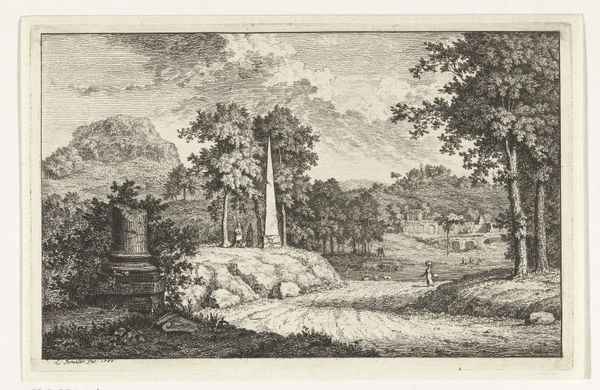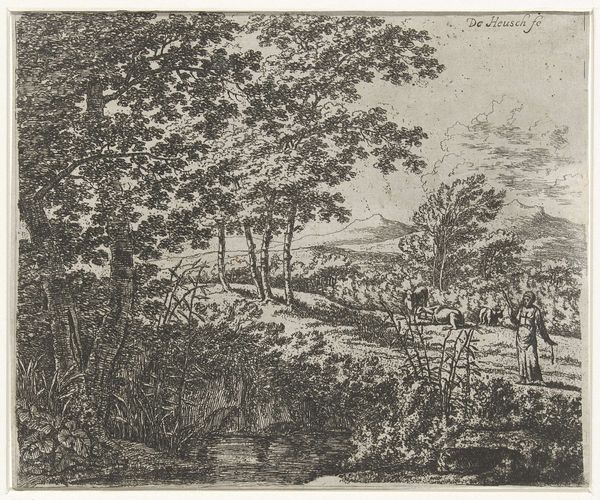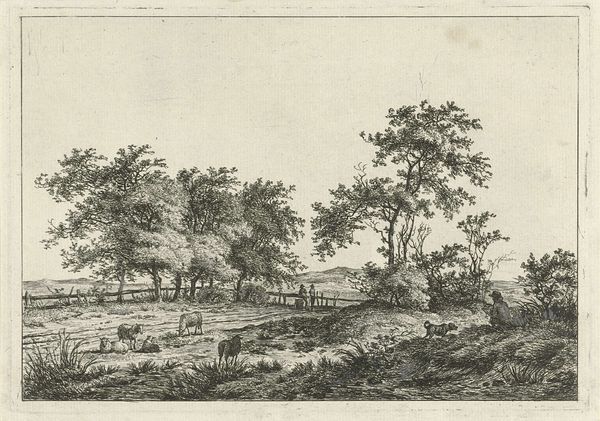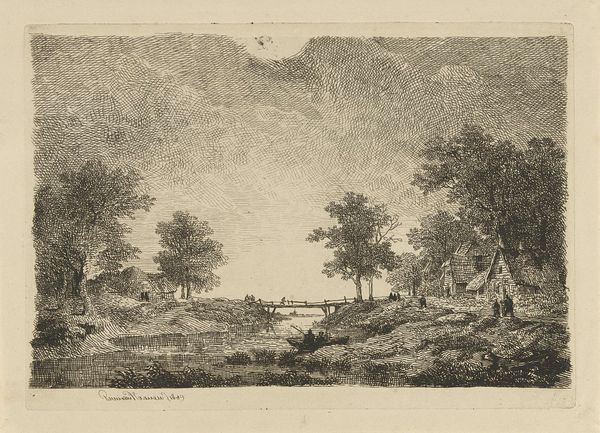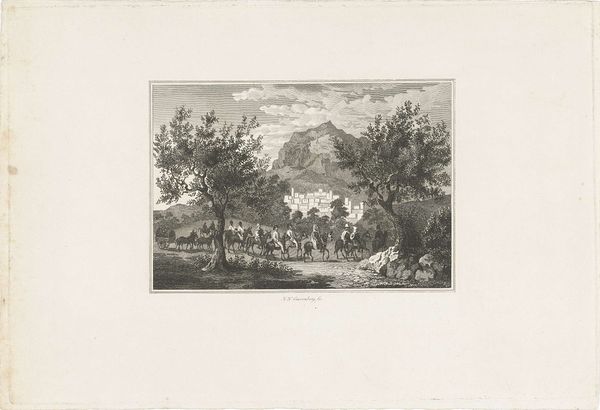
Rustend groepje wandelaars met balspelende kinderen Possibly 1823 - 1883
0:00
0:00
print, etching
# print
#
etching
#
landscape
#
etching
#
genre-painting
#
realism
Dimensions: height 90 mm, width 107 mm
Copyright: Rijks Museum: Open Domain
Curator: Look at this etching, "Rustend groepje wandelaars met balspelende kinderen" (Resting group of hikers with children playing ball), possibly created between 1823 and 1883 by Johannes Adrianus van der Drift. Editor: There's an immediate feeling of joyous chaos. The dense lines and the busy composition suggest a bustling, almost feverish energy of play. Curator: The technique is key. This etching shows incredible detail despite its modest scale. Note how the artist uses the etching to capture the light filtering through the trees. We must remember that the etching process allows for multiple prints; art accessible to many, mirroring this scene of popular leisure. Editor: The figures feel deliberately arranged. See the central figure atop the tree, framed by the foliage, almost like a mischievous deity presiding over the scene of childish play? I read this as an echo of older folklore traditions about nature spirits overseeing human revelry. Curator: Yes, and consider the role of printmaking itself in disseminating those very traditions. These images, circulating widely, helped shape and reinforce shared cultural memories of play and leisure among the working and middle classes. The production and consumption are deeply linked to broader social shifts of the 19th century. Editor: And the ball, the object of all this frenetic activity. It's such a simple shape, but loaded. It can represent playfulness, youth, the passing of time, all centered within this controlled space. It's like an icon for fleeting joy. Curator: Indeed. And by depicting such a scene, the artist is not simply showing us recreation but also commenting on the growing emphasis on childhood and leisure within a rapidly changing society. It's fascinating to observe how the seemingly innocent scene of children playing relates to broader issues of class and industrialization. Editor: Ultimately, this seemingly simple etching reveals deeper layers of cultural understanding – a frozen moment filled with life, joy, and an intriguing link to the history of our collective imagination. Curator: An exploration into process and imagery that gives us, as modern viewers, pause for consideration about how the availability of materials creates a scene we can still recognise today.
Comments
No comments
Be the first to comment and join the conversation on the ultimate creative platform.
